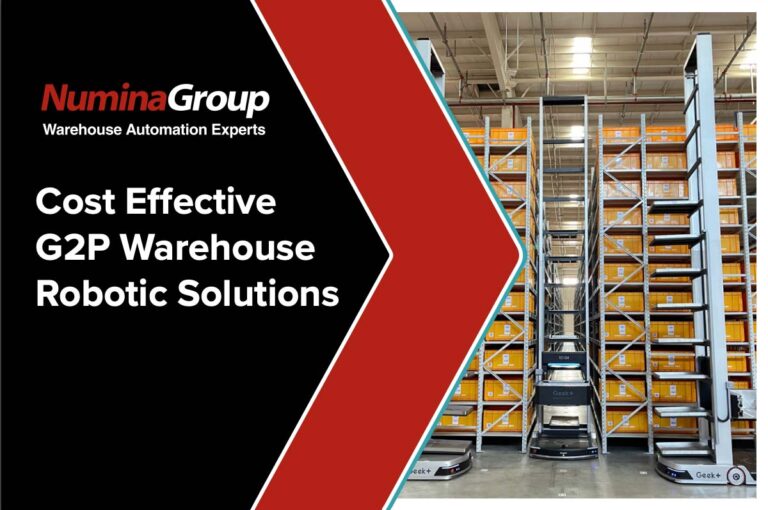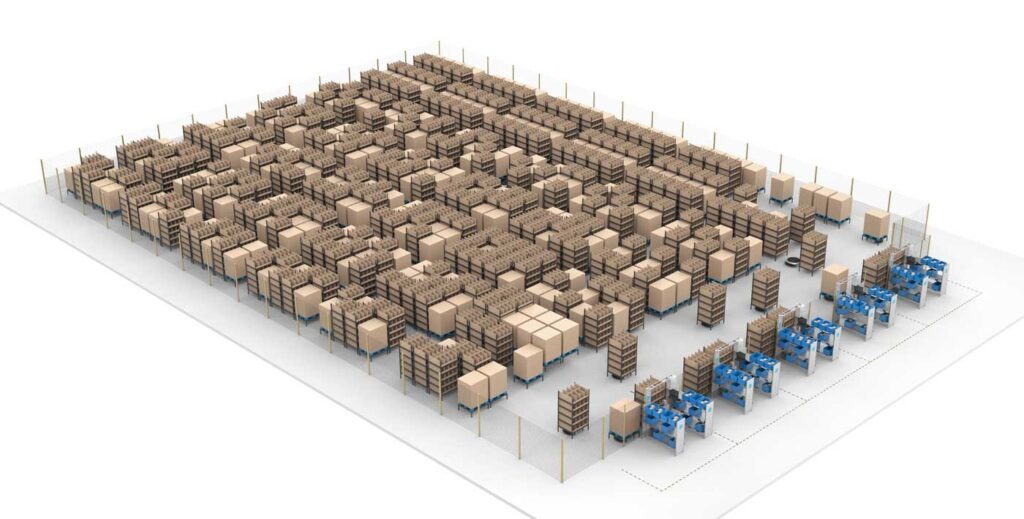
The latest goods-to-person (G2P) warehouse robot solutions for order fulfillment have advanced rapidly over the last few years. Today’s G2P robotic solutions are now approaching the performance level of traditional shuttle systems and exceeding the performance of mini-load crane-based storage systems.
Today’s G2P robotic automation solutions are also less costly than traditional systems. The original generations of tote and case-based shuttle systems and mini-load storage and picking systems are more expensive as precision steel, international shipping, and installation costs continue to rise. These costs increase capital investments and extend the return on investment (ROI) to five or more years.
Further, traditional shuttle systems based on rail and fixed aisle order picking shuttle carts storage systems deliver fast performance but suffer from a higher cost per storage position and lack the flexibility and scalability of today’s G2P robotic picking solutions.
While traditional goods-to-person solutions come with higher equipment and installation costs and longer delivery and commissioning time, the latest G2P warehouse robotic solutions overcome these limitations and are more cost-effective. As a result, a growing number of companies are choosing to invest in robotics.

The performance advancements and cost savings offered by the latest autonomous mobile warehouse robot (AMR) based G2P solutions are achieved through the innovation of using two or more different task-oriented robots within the same G2P system.
This is essentially a “divide and conquer” design approach within the next generation of G2P robotic automation.
Today’s warehouse robots utilize a much more adaptive and cost-effective means to store and pick products.
The latest generation hybrid G2P systems with mobile warehouse robots travel at higher speeds, handle more weight, and reach higher, denser storage shelves than the robotic G2P systems from just a few years ago.
A major warehouse robotics innovation in shuttle design provides a high-performance, high-density G2P solution that rivals the performance of a traditional tote shuttle system without the high infrastructure investment and costly expansion costs.
The box and tote-carrying warehouse robots use a modular, scalable design. Teams of different types of robots work together to more cost-effectively store, pick orders, and move products faster and more efficiently while increasing a DC’s facility space utilization.
These solutions combine two families of robots, the high-reach box and tote carrying and moving robots that can reach heights of 8 meters/26 feet for automatically storing and picking totes and cases.
These robots include a depth camera and other sensors and use QR code-based navigation to move throughout the order picking and storage aisles.
The G2P robots can autonomously pick and transfer up to eight totes to floor pick-up locations to move to the picking station. In addition, the bots handle large capacity tote weights up to 85 lbs in dense double deep racking.
The secret to the boost in performance is using the second family of small and nimble tote-carrying mobile robots teamed with the high-reach picking and storage bots.
The small shuttle bots travel in separate pick-up and delivery aisles from the high-reach picking and storage bots at the bottom level, inside the four tote or box storage racking.
When the high reach bot completes the picking of a group of totes and boxes, it moves and inserts the tote into a floor-level pick-up position. This action triggers a message to dispatch the small shuttle bots to travel to the picking location, pick up, and move the tote to the required picking station.
The same process moves totes from the receiving replenishment area to the required storage aisles.
The dedicated purpose-built tote-carrying bots increase the speed that totes can be moved to the operator pick stations, resulting in tote delivery rates of 300-400 totes an hour within the robotic G2P solutions.
The faster pick rates and higher storage density capacity combine to provide a return-on-investment (ROI) of 24 to 30 months, half the time of a traditional tote shuttle storage and picking solution.
Additionally, robotics-based G2P solutions have inherent redundancy due to no single point of failure and do not require a full-time skilled on-site maintenance staff to operate. The simplified maintenance reduces high yearly operating costs, making these G2P solutions an affordable investment for small to mid-sized warehouse operations.
G2P and AMR-based picking and storage solutions combined with the right blend of traditional conveyor systems and pack-and-ship automation reduce touches and increase order flow across the entire order fulfillment operation.
Any business embarking on any automation initiative, especially a goods-to-person or an AMR-based picking solution, needs a warehouse design-first approach to analyze, select and justify the right mix of technologies.
This approach needs to happen in partnership with an independent warehouse automation integrator that evaluates technologies and recommends the right blend of technologies to provide a solution with the greatest efficiencies.
The entire warehouse pick, pack, and ship system performs at the highest level when orchestrated by a top-tier warehouse execution and control system (WCS-WES) software platform.
Numina Group’s warehouse execution and control software, RDS™ Real-Time Distribution Software, manages and optimizes order release for G2P and the other warehouse automation technologies that increase productivity, lower manual labor dependency, and generate a rapid ROI.
We’re excited to invite you to join us at Modex 2022 Booth #B1813 to discover how we blend pick, pack, and ship automation that together drives the greatest gains in DC profitability.